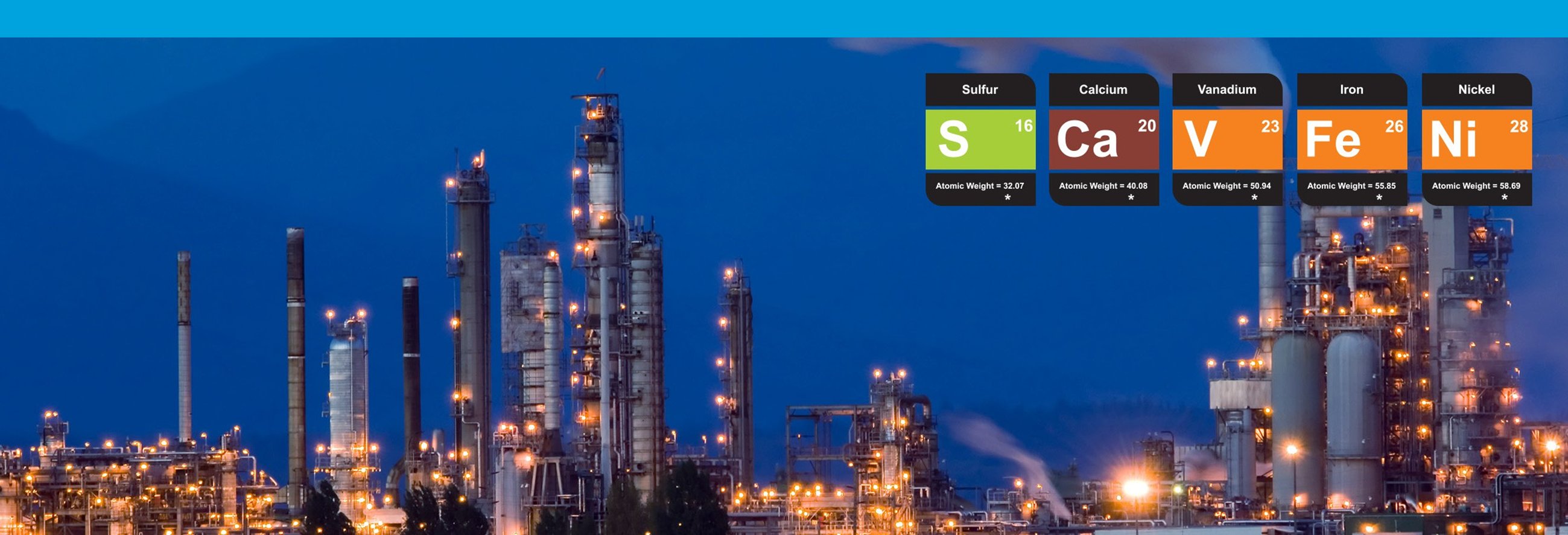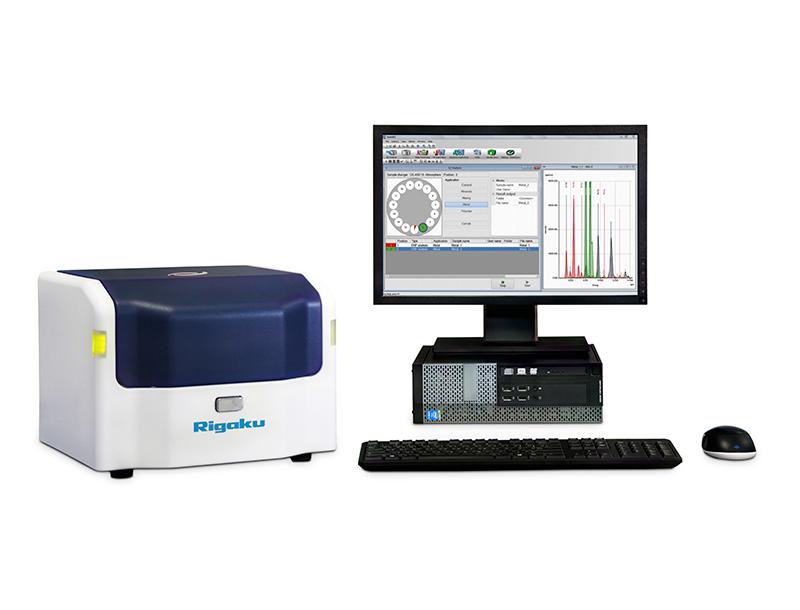Analysis of S, Ca, V, Fe, Ni in Crude Oil

Scope
The analysis of sulfur, calcium, vanadium, iron, and nickel in crude is demonstrated. The measurement is also applicable to residual oil, bunker fuels, and other heavy hydrocarbon oils.
NEX DE complies with ASTM D8252-19, Standard Test Method Vanadium and Nickel in Crude and Residual Oil by X-ray Spectrometry.
NYMEX/CME specifications allow for maximum levels of 8 mg/kg Ni and 15 mg/ kg V for light sweet crude oils futures contracts. NEX DE is used as a simpler, faster alternative to ICP to meet the NYMEX/CME requirements.
 Model: NEX DE
Model: NEX DE
Background
Sulfur, vanadium, and nickel occur naturally in crude oil, and their concentrations
vary depending on the geographical region of the oil deposits. Depending on the region, some crude may also contain measurable levels of calcium and iron. High metal content can foul the refining process during cracking, and so low-metal crude is desirable. At the refinery as well as midstream at pipelines, transportation, gathering points, and during blending, a quick and easy means of screening and monitoring the metal content is a valuable tool in characterizing the quality of the crude before refining. Rigaku NEX DE EDXRF analyzer is an ideal multi-element tool for monitoring the concentrations of not only sulfur and metals in crude, resid, and other heavy hydrocarbons.
Calibration
Empirical calibrations were built using a suite of 10 commercially available mineral oil calibration standards that represent crude, resid, and other heavy hydrocarbon oils.
| Element | Concentration range |
| S | 0.30 – 4.00% |
| Ca | 50 – 800 ppm |
| V | 5 – 50 ppm |
| Fe | 5 – 100 ppm |
| Ni | 5 – 50 ppm |
Repeatability
To demonstrate repeatability (precision), three calibration standards were measured in 10 repeat analyses.
| Sample: Std 1 | ||||
| Element | Standard value | Average value | Std. dev | % Relative dev |
| S % | 2.000 | 2.020 | 0.017 | 0.9 |
| Ca ppm | 310 | 301 | 2 | 0.6 |
| V ppm | 50 | 50.3 | 0.2 | 0.4 |
| Fe ppm | 5 | 4.9 | 0.5 | 10 |
| Ni ppm | 5 | 4.8 | 0.2 | 4.0 |
| Sample: Std 3 | ||||
| Element | Standard value | Average value | Std. dev | % Relative dev |
| S % | 3.000 | 3.040 | 0.024 | 0.8 |
| Ca ppm | 700 | 706 | 6 | 0.9 |
| V ppm | 5 | 5.1 | 0.2 | 4.0 |
| Fe ppm | 100 | 103 | 1 | 1.0 |
| Ni ppm | 40 | 41.3 | 0.6 | 1.5 |
| Sample: Std 4 | ||||
| Element | Standard value | Average value | Std. dev | % Relative dev |
| S % | 1.500 | 1.521 | 0.016 | 1.1 |
| Ca ppm | 50 | 48.7 | 1 | 2.0 |
| V ppm | 20 | 19.1 | 0.2 | 1.0 |
| Fe ppm | 30 | 31.1 | 0.9 | 0.3 |
| Ni ppm | 25 | 25.3 | 0.4 | 1.6 |
Conclusion
The Rigaku NEX DE gives technical and non-technical operators a simple yet powerful and versatile system for quantifying multi- elemental composition using the empirical approach. The results indicate that given
stable samples, proper sample handling, and calibration technique, the NEX DE achieves excellent performance for monitoring sulfur and metals in crude and other heavy hydrocarbon oils.

Contact Us
Whether you're interested in getting a quote, want a demo, need technical support, or simply have a question, we're here to help.
